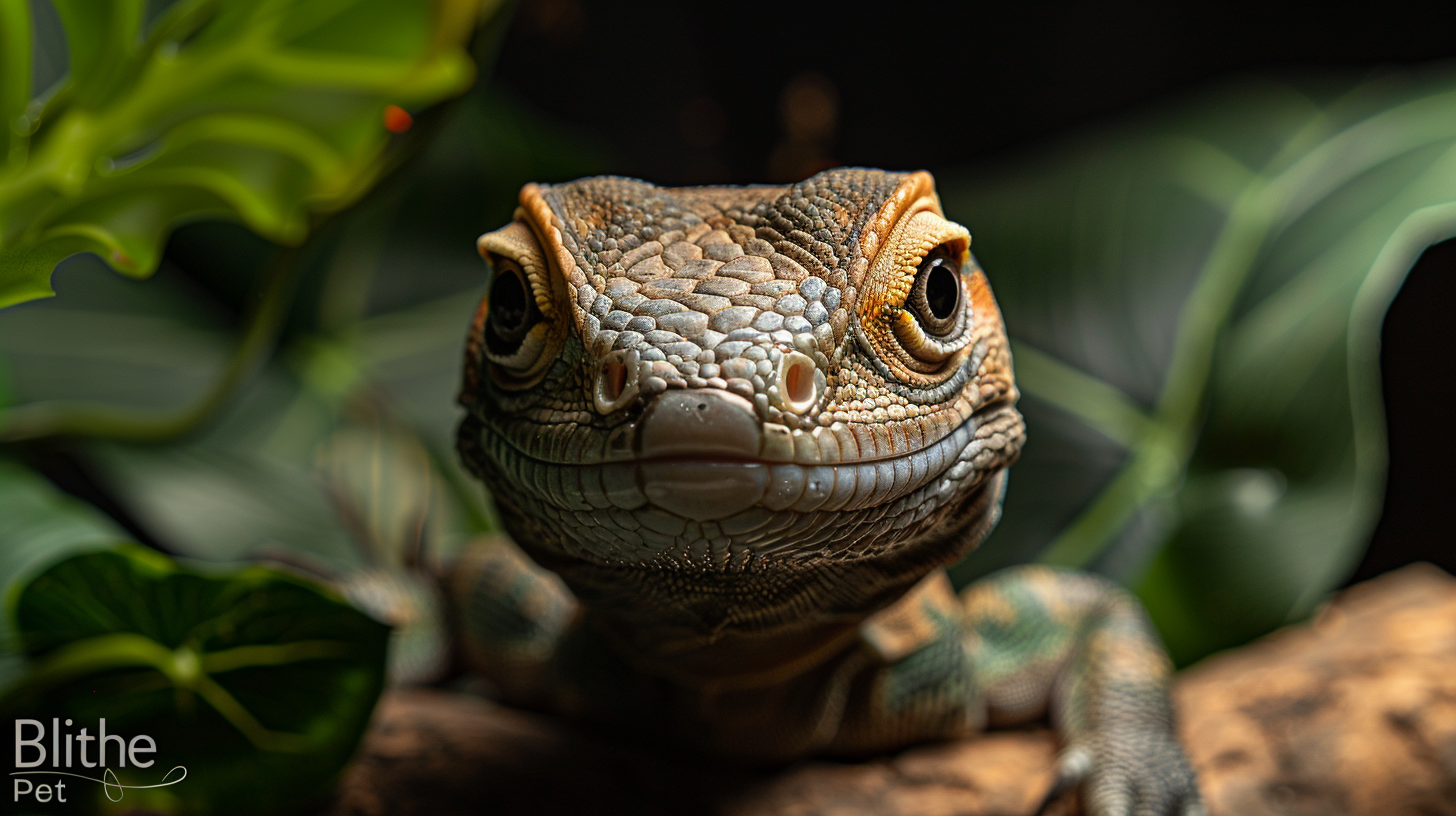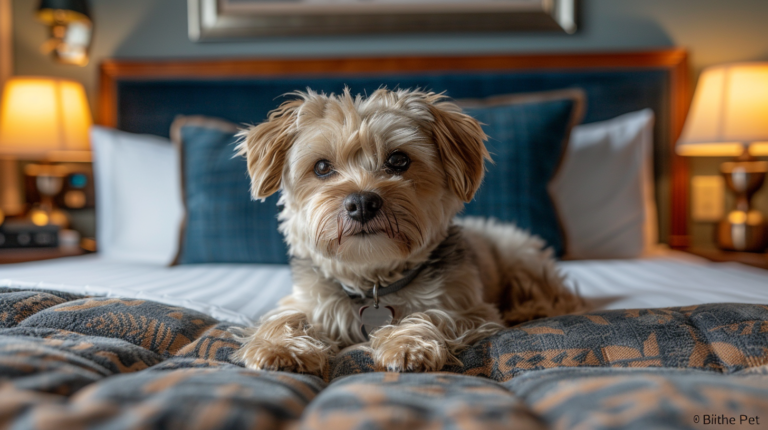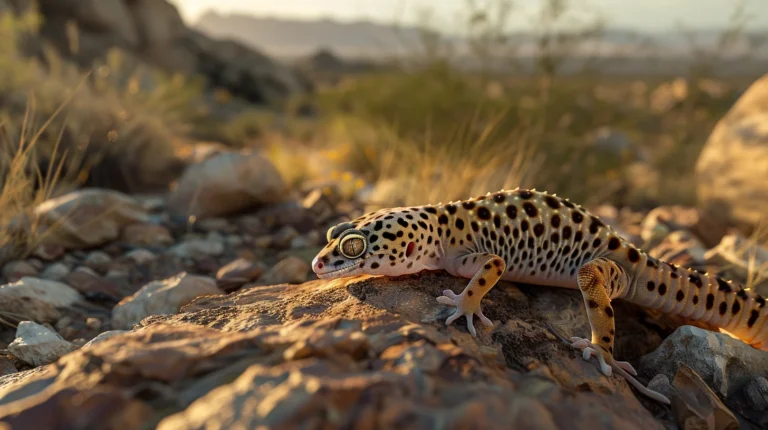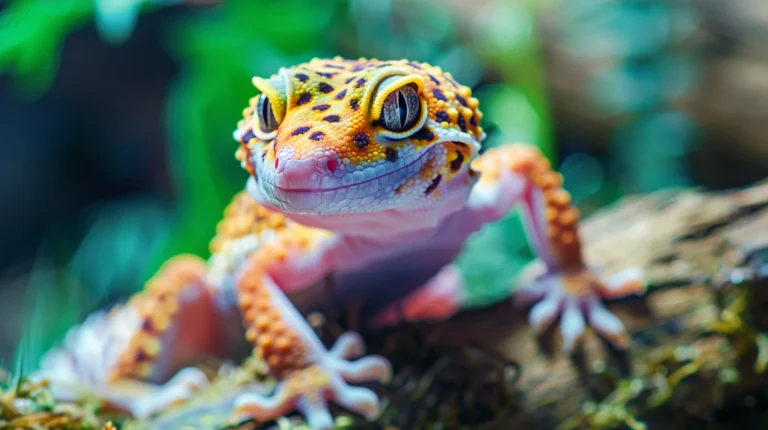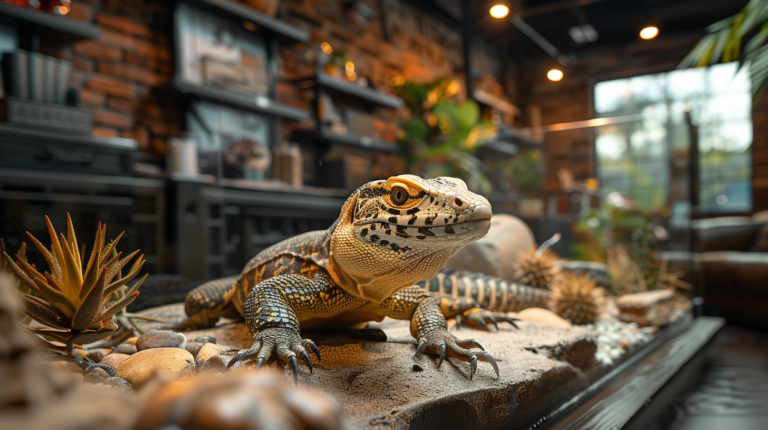Discover everything about Ackie Monitor care, habitat, diet, and behavior. Expert guide for reptile beginners with 10 essential facts and professional tips.
Table of Contents
Did you know that the Ackie Monitor, despite being one of the smallest monitor lizards, can live up to 20 years in captivity when properly cared for? This fascinating reptile has captured the hearts of lizard enthusiasts worldwide, yet many potential owners underestimate the commitment required for these intelligent creatures.
The Ackie Monitor (Varanus acanthurus), also known as the Ridge-tailed Monitor or Spiny-tailed Monitor, represents an excellent entry point into the world of monitor lizard keeping. Native to Australia’s arid regions, these compact reptiles have gained popularity among pet owners seeking an engaging, manageable monitor species. Unlike their massive cousins, Ackie Monitors typically reach only 24-28 inches in length, making them suitable for dedicated reptile keepers who want the monitor experience without requiring enormous enclosures.
When I first encountered an Ackie Monitor at a reptile expo in Phoenix three years ago, I was immediately struck by their alert, curious nature and beautiful banded patterns. The breeder explained that these weren’t typical “starter reptiles” but rather intelligent animals requiring specific care protocols that reward dedicated owners with remarkable personalities and longevity.
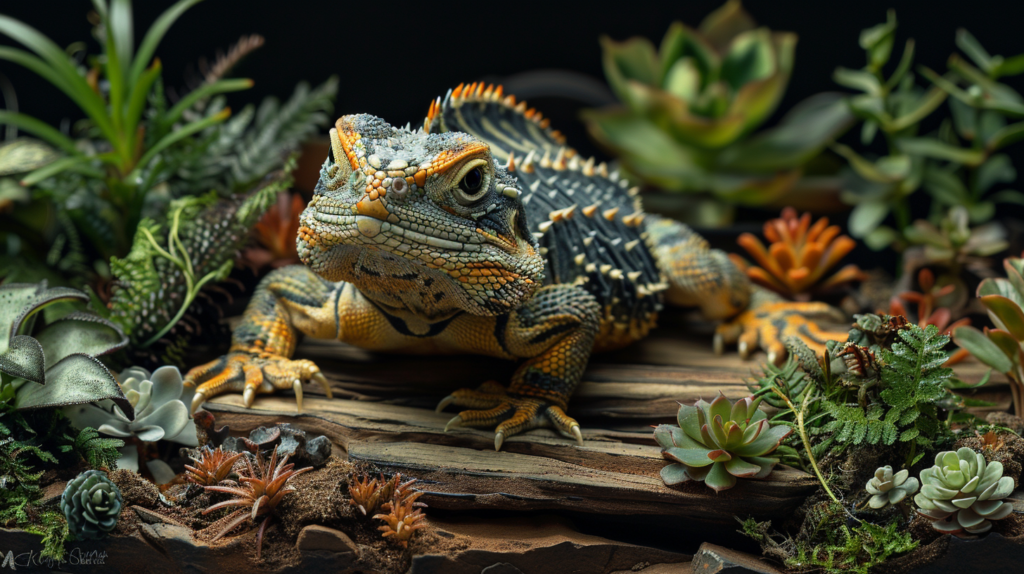
Understanding the Ackie Monitor before bringing one home is crucial for success. These reptiles demand specific environmental conditions, specialized diets, and consistent care routines that differ significantly from more common pet reptiles like bearded dragons or geckos. This comprehensive guide covers the 10 most essential facts every beginner should know before considering an Ackie Monitor as their next companion.
1. Ackie Monitor Species Overview and Natural Habitat
The Ackie Monitor belongs to the Varanidae family and represents one of Australia’s most adaptable monitor species. In their native habitat, these reptiles inhabit rocky outcrops, scrublands, and semi-arid regions across northern and central Australia. Their natural range extends from Western Australia through the Northern Territory and into Queensland.
Two primary subspecies exist: the Red Ackie (Varanus acanthurus acanthurus) and the Yellow Ackie (Varanus acanthurus brachyurus). Red Ackies typically display more vibrant coloration with distinct red and orange bands, while Yellow Ackies showcase golden-yellow patterns with more subdued markings. Both subspecies share similar care requirements and temperaments.
In the wild, Ackie Monitors are semi-arboreal, spending time both on the ground and climbing rocky formations or low vegetation. They’re active during daylight hours (diurnal) and retreat to rocky crevices or burrows during extreme temperatures. This natural behavior directly influences their captive care requirements.
Their natural diet consists primarily of insects, small vertebrates, and occasional eggs. Wild Ackies are opportunistic feeders, adapting their hunting strategies based on seasonal prey availability. Understanding these natural behaviors helps reptile keepers create appropriate captive environments that promote physical and psychological well-being.
Climate data from their native range shows average temperatures between 75-95°F with significant daily temperature fluctuations. Humidity levels typically range from 30-60%, with higher humidity during brief wet seasons. These environmental parameters serve as guidelines for captive habitat setup.
2. Essential Housing Requirements and Enclosure Setup
Proper housing represents the foundation of successful Ackie Monitor care. Adult Ackies require substantial floor space despite their relatively small size compared to other monitors. The minimum enclosure size for a single adult should measure 6 feet long, 3 feet wide, and 4 feet tall, though larger is always preferable.
Ackie Monitor Enclosure Requirements by Age
| Age Group | Length | Width | Height | Temperature Range | Humidity Level |
|---|---|---|---|---|---|
| Juvenile (0-6 months) | 40″ | 18″ | 20″ | 85-100°F | 40-50% |
| Sub-adult (6-18 months) | 60″ | 24″ | 30″ | 82-95°F | 35-45% |
| Adult (18+ months) | 72″ | 36″ | 48″ | 80-95°F | 30-40% |
Substrate selection significantly impacts Ackie Monitor health and behavior. Appropriate options include cypress mulch, coconut fiber, or specialized reptile substrates that maintain moderate humidity while allowing natural digging behaviors. Avoid cedar, pine, or any aromatic wood shavings that can cause respiratory irritation.
Temperature gradients are critical for proper thermoregulation. Create a basking area reaching 95-100°F using ceramic heat emitters or halogen bulbs, while maintaining a cool side around 75-80°F. Nighttime temperatures can safely drop to 70-75°F. Use multiple thermometers and thermostats to monitor and control temperatures accurately.
Hiding places should be available on both warm and cool sides of the enclosure. Rock formations, cork bark pieces, or commercial reptile caves work well. Ackie Monitors appreciate tight-fitting retreats that provide security and help regulate body temperature.
UVB lighting is essential for proper calcium metabolism and overall health. Use a high-quality UVB bulb (10-12% output) positioned 12-18 inches from basking areas. Replace UVB bulbs every 6-12 months regardless of whether they still produce visible light.
Water should be provided in a shallow dish large enough for soaking but not so deep as to cause drowning risks. Change water regularly to prevent bacterial growth. Some keepers provide multiple water sources to encourage natural behaviors.
3. Nutritional Needs and Feeding Guidelines
Ackie Monitor nutrition requires careful attention to prey variety, frequency, and supplementation. These carnivorous reptiles thrive on diverse diets that mimic their natural feeding patterns. Juvenile Ackies require daily feeding, while adults can be fed every 2-3 days.
Primary food items should include appropriately sized insects such as crickets, dubia roaches, mealworms, superworms, and waxworms. Insects should be gut-loaded 24 hours before feeding to maximize nutritional value. Dust prey items with calcium powder 2-3 times weekly and use calcium with D3 once weekly.
Ackie Monitor Feeding Schedule and Portions
| Life Stage | Feeding Frequency | Prey Size | Daily Portion | Weekly Treats |
|---|---|---|---|---|
| Hatchling (0-3 months) | Daily | 1/4 head width | 3-5 small insects | 1-2 pinkie parts |
| Juvenile (3-12 months) | Daily | 1/3 head width | 5-8 medium insects | 1 fuzzy mouse |
| Sub-adult (12-18 months) | Every other day | 1/2 head width | 6-10 large insects | 1 adult mouse |
| Adult (18+ months) | Every 2-3 days | Equal to head width | 8-15 insects or 1-2 mice | Varied protein sources |
Whole prey items like mice, chicks, or quail provide excellent nutrition and enrichment. Adult Ackie Monitors can consume adult mice, while juveniles should receive appropriately sized portions. Frozen-thawed prey is safer than live prey and easier to store.
Avoid feeding wild-caught insects due to pesticide contamination risks. Commercial reptile foods can supplement natural prey but shouldn’t comprise the entire diet. Fresh foods like eggs (offered sparingly) can provide variety and enrichment.
Feeding responses in Ackie Monitors can be intense, so use feeding tongs to prevent accidental bites. These intelligent reptiles quickly learn feeding routines and may become excited when they see their keeper approaching with food.
Monitor body condition regularly by observing the base of the tail and overall body shape. Overweight Ackies show fat deposits around the tail base, while underweight individuals appear thin with prominent hip bones. Adjust feeding frequency and portion sizes accordingly.
Supplementation schedules may need modification based on UVB exposure, life stage, and breeding status. Gravid females require increased calcium and protein intake. Consult with reptile veterinarians for specific supplementation recommendations.
4. Temperature and Humidity Control Systems
Maintaining proper environmental parameters represents one of the most critical aspects of Ackie Monitor care. These reptiles are extremely sensitive to temperature fluctuations and require precise control systems to remain healthy and active.
Temperature regulation involves creating distinct thermal zones within the enclosure. The basking area should reach 95-100°F during the day, measured at the surface level where the lizard will rest. Use infrared thermometers for accurate surface temperature readings, as air temperature measurements can be misleading.
Heat sources should include both overhead heating and under-tank heating elements. Ceramic heat emitters provide excellent ambient heating without producing light that might disrupt natural day/night cycles. Under-tank heaters help warm substrate for natural thermoregulation behaviors.
Thermostat controllers are mandatory equipment for Ackie Monitor keeping. Proportional thermostats provide more stable temperature control than simple on/off models. Use separate thermostats for different heat sources to prevent equipment failures from causing dangerous temperature swings.
Humidity levels should remain between 30-40% for adults, slightly higher for juveniles. Monitor humidity using digital hygrometers placed at multiple locations within the enclosure. Humidity that’s too high can cause respiratory problems, while levels that are too low may lead to shedding difficulties.
Natural humidity fluctuations benefit Ackie Monitor health. Slightly increase humidity during evening hours by misting one area of the enclosure lightly. This mimics natural dew formation and provides drinking opportunities for lizards that prefer to lap water droplets.
Ventilation prevents stagnant air conditions that promote bacterial growth and respiratory infections. Ensure adequate airflow through screen tops or ventilation panels while maintaining appropriate humidity levels. Cross-ventilation works better than single-point ventilation systems.
Temperature monitoring should include both continuous monitoring and regular spot checks. Data logging thermometers help identify temperature patterns and equipment malfunctions. Keep backup heating elements available for emergency use.
Seasonal temperature cycling can benefit adult Ackie Monitors, particularly those intended for breeding. Gradually reduce temperatures by 5-10°F during winter months while maintaining proper temperature gradients. This natural cycling stimulates reproductive behaviors and overall health.
5. Behavioral Characteristics and Intelligence Levels
Ackie Monitors display remarkable intelligence that sets them apart from many other reptile species. These lizards demonstrate problem-solving abilities, recognition of individual humans, and complex social behaviors that make them fascinating companions for dedicated keepers.
Unlike passive reptiles that spend most of their time hiding, Ackie Monitors are active, curious animals that explore their environments constantly. They use their forked tongues to “taste” the air, gathering chemical information about their surroundings. This behavior, called chemoreception, helps them locate food, identify potential threats, and navigate their territory.
Recognition capabilities in Ackie Monitors often surprise new owners. These reptiles learn to distinguish between different family members and may show preferences for certain individuals. They typically become more relaxed with their primary caretaker while remaining wary of strangers.
Territorial behaviors are common, especially in adult males. Ackie Monitors may claim specific areas of their enclosure and defend them from perceived intruders. This territorial instinct extends to feeding responses, where they may become protective of food items.
Enrichment activities significantly improve Ackie Monitor quality of life. These intelligent reptiles benefit from environmental changes, novel objects, and problem-solving opportunities. Rotating decorations, hiding food items, and providing climbing opportunities prevent boredom and promote natural behaviors.
Social hierarchies can develop when multiple Ackie Monitors are housed together, though this practice is generally not recommended for beginners. Dominant individuals may monopolize basking areas, food resources, or prime hiding spots, leading to stress in subordinate animals.
Communication methods include body language, scent marking, and physical positioning. Dominant Ackie Monitors may display elevated postures with extended dewlaps, while submissive individuals remain low to the ground. Understanding these signals helps keepers assess their lizard’s emotional state.
Handling tolerance varies significantly between individuals. Some Ackie Monitors tolerate gentle handling well, while others prefer minimal human contact. Never force interactions, as this can increase stress levels and potentially lead to aggressive responses.
Activity patterns follow predictable daily routines. Most Ackie Monitors are most active during mid-morning and late afternoon hours, coinciding with optimal body temperatures. They typically retreat to hiding spots during the hottest parts of the day and remain less active during evening hours.
6. Health Issues and Preventive Care
Preventive healthcare represents the most effective approach to maintaining Ackie Monitor health throughout their potentially 20-year lifespan. Understanding common health issues and their prevention strategies helps owners provide optimal care and recognize problems early.
Metabolic Bone Disease (MBD) represents the most serious preventable condition affecting Ackie Monitors. This calcium deficiency disorder causes soft bones, tremors, and eventual death if untreated. Prevention requires adequate UVB exposure, proper calcium supplementation, and balanced nutrition.
Regular veterinary examinations should occur annually, even for apparently healthy Ackie Monitors. Reptile-experienced veterinarians can detect subtle health changes before they become serious problems. Establish a relationship with a qualified exotic veterinarian before emergencies arise.
Quarantine procedures are essential when introducing new Ackie Monitors or after exposure to potentially contaminated environments. New acquisitions should be isolated for 60-90 days with separate equipment and handling protocols to prevent disease transmission.
Fecal examinations help detect internal parasites before they cause serious health problems. Annual fecal samples should be examined by veterinarians familiar with reptile parasites. Wild-caught prey items can introduce parasites, making regular screening important.
Environmental stressors significantly impact Ackie Monitor immune function. Inappropriate temperatures, poor lighting, inadequate hiding places, and overcrowded conditions all contribute to stress-related illness. Maintaining optimal environmental conditions prevents many health problems.
Shedding problems occasionally occur, particularly around toes and tail tips. Proper humidity levels and rough surfaces for rubbing usually prevent shedding difficulties. Stuck shed can be carefully removed using warm water soaks and gentle assistance.
Injury prevention focuses on enclosure safety and appropriate handling techniques. Remove sharp edges, secure all heating elements, and ensure hiding places cannot collapse. Ackie Monitors are surprisingly strong and can injure themselves if enclosures aren’t properly secured.
Record-keeping helps track health patterns and identify developing problems. Document feeding responses, behavior changes, shedding cycles, and environmental parameters. This information proves invaluable during veterinary consultations.
7. Legal Considerations and Acquisition Sources
Understanding legal requirements represents a crucial first step before acquiring an Ackie Monitor. Regulations vary significantly between states, countries, and even local municipalities, making research essential for prospective owners.
In the United States, Ackie Monitor ownership is legal in most states, but specific regulations may apply regarding permits, registration, or housing requirements. Some states classify monitor lizards as exotic animals requiring special permits or prohibit private ownership entirely. Always verify current local and state regulations before purchase.
European regulations differ substantially between countries. While some nations allow Ackie Monitor ownership with minimal restrictions, others require permits, microchipping, or proof of captive breeding. The Convention on International Trade in Endangered Species (CITES) regulations may apply to international transport.
Reputable sources for Ackie Monitor acquisition include established reptile breeders, specialty reptile stores, and reptile expos. Avoid purchasing from sources that cannot provide detailed care information, health guarantees, or breeding records. Captive-bred animals are always preferable to wild-caught specimens.
Import/export regulations apply to Ackie Monitor transport between countries. These procedures often require veterinary health certificates, quarantine periods, and substantial paperwork. Work with experienced reptile importers when acquiring animals from international sources.
Documentation should include proof of captive breeding, health records, and feeding histories. Legitimate breeders provide detailed care sheets and ongoing support for new owners. Be suspicious of sellers who cannot provide proper documentation or seem reluctant to answer care questions.
Pricing for Ackie Monitors varies based on age, color morph, and breeder reputation. Expect to pay $150-400 for juveniles, with rare color morphs commanding higher prices. Remember that initial purchase price represents only a fraction of long-term keeping costs.
Transportation regulations may apply to Ackie Monitor shipping or transport. Many carriers have specific requirements for reptile transport, including temperature controls and packaging specifications. Plan transportation carefully to minimize stress and ensure animal safety.
Insurance considerations may apply to exotic pet ownership. Some homeowner’s insurance policies exclude coverage for exotic animals or require additional riders. Check with insurance providers before acquiring an Ackie Monitor to understand potential liability issues.
8. Common Mistakes and How to Avoid Them
New Ackie Monitor owners frequently make predictable mistakes that can seriously impact their lizard’s health and well-being. Understanding these common errors helps beginners provide better care from the start and avoid expensive corrective measures.
Inadequate enclosure size represents the most frequent mistake among new owners. Many people underestimate the space requirements for Ackie Monitors, thinking that smaller lizards need proportionally smaller enclosures. These active reptiles require substantial floor space for natural behaviors and proper temperature gradients.
Temperature management errors often stem from using inappropriate equipment or inadequate monitoring systems. Relying solely on pet store “reptile bulbs” without proper thermostats leads to dangerous temperature fluctuations. Always invest in quality thermostats and multiple monitoring devices.
Feeding mistakes include offering inappropriate prey sizes, inadequate variety, or incorrect feeding frequencies. Many beginners either overfeed (causing obesity) or underfeed (causing stunted growth). Follow established feeding guidelines and monitor body condition regularly.
Improper supplementation represents another common error. Some owners over-supplement with vitamins and minerals, while others provide inadequate calcium or UVB exposure. Excessive supplementation can be just as harmful as deficiencies.
Substrate choices frequently cause problems when owners select inappropriate materials. Using substrates that hold too much moisture, cause impaction, or contain harmful chemicals leads to health problems. Research substrate options thoroughly before making selections.
Handling mistakes occur when owners attempt to handle Ackie Monitors too frequently or inappropriately. These intelligent reptiles need time to acclimate before regular handling begins. Forced interactions increase stress and may lead to defensive behaviors.
Lighting errors include using inadequate UVB bulbs, incorrect placement distances, or failing to replace bulbs regularly. UVB requirements are specific and critical for calcium metabolism. Invest in quality lighting systems and maintain replacement schedules.
Ventilation problems develop when owners prioritize humidity retention over air circulation. Poor ventilation leads to respiratory infections and bacterial growth. Ensure adequate airflow while maintaining appropriate environmental parameters.
Emergency preparedness oversights leave owners unprepared for equipment failures or health emergencies. Maintain backup heating elements, establish relationships with reptile veterinarians, and keep emergency supplies available.
Impulse purchasing represents perhaps the most serious mistake. Ackie Monitors require long-term commitments and substantial setup costs. Research thoroughly and prepare completely before acquiring these demanding reptiles.
9. Setting Up Your First Ackie Monitor Habitat: Step-by-Step Guide
Creating an appropriate habitat for your Ackie Monitor requires careful planning and attention to detail. This step-by-step guide helps beginners establish proper environments that promote health and natural behaviors.
Step 1: Select and Prepare the Enclosure Choose an enclosure that meets minimum size requirements with room for future upgrades. Clean thoroughly with reptile-safe disinfectants and rinse completely. Ensure all joints are sealed and ventilation is adequate.
Step 2: Install Heating Systems Mount ceramic heat emitters or other heat sources at one end of the enclosure. Install under-tank heaters beneath substrate on the warm side. Connect all heating elements to appropriate thermostats before first use.
Step 3: Add Substrate and Hardscaping Add 3-4 inches of appropriate substrate, creating slight variations in depth. Install rocks, cork bark, or other decorative elements securely. Ensure all decorations are stable and cannot shift or fall.
Step 4: Install Lighting Systems Mount UVB fixtures according to manufacturer specifications. Position bulbs 12-18 inches from basking surfaces. Install timers to maintain consistent day/night cycles of 12-14 hours daylight.
Step 5: Set Up Water and Feeding Areas Place water dishes in easily accessible locations away from heating elements. Designate feeding areas where food can be offered safely. Ensure all dishes can be easily removed for cleaning.
Step 6: Add Hiding Places and Enrichment Install secure hiding spots on both warm and cool sides. Add climbing opportunities and environmental enrichment items. Ensure the Ackie Monitor can thermoregulate effectively throughout the enclosure.
Step 7: Test and Calibrate Systems Run all systems for 24-48 hours before introducing your lizard. Monitor temperatures, humidity, and lighting levels continuously. Adjust settings as needed to achieve target parameters.
Step 8: Final Safety Checks Inspect all equipment connections and mounting systems. Remove any sharp edges or potential hazards. Verify that escape-proof measures are secure and effective.
For more expert pet care tips and product recommendations, visit BlithePet.com — your trusted source for pet wellness.
10. Long-term Care and Commitment Requirements
Ackie Monitor ownership represents a significant long-term commitment that extends far beyond initial setup costs and enthusiasm. These intelligent reptiles can live 15-20 years in captivity, requiring consistent care throughout their extended lifespans.
Financial commitments include ongoing costs for food, utilities, equipment replacement, and veterinary care. Monthly expenses typically range from $30-60 for feeding and utilities, with annual veterinary checkups costing $100-200. Emergency medical care can cost $300-1000 or more for serious conditions.
Time requirements extend beyond daily feeding and maintenance tasks. Ackie Monitors benefit from regular interaction, environmental enrichment, and careful observation. Dedicated owners spend 30-60 minutes daily on direct care activities and monitoring.
Equipment maintenance becomes a perpetual responsibility. UVB bulbs require replacement every 6-12 months, thermostats need calibration, and heating elements eventually fail. Maintaining spare equipment prevents emergency situations that could endanger your lizard.
Travel arrangements become more complicated with Ackie Monitor ownership. These reptiles cannot be easily boarded like traditional pets, requiring knowledgeable caretakers or specialized reptile boarding facilities. Extended absences require careful planning and preparation.
Space considerations may limit housing flexibility. Large enclosures are difficult to relocate and may not fit in all living situations. Consider long-term housing stability before committing to Ackie Monitor ownership.
Educational commitments continue throughout ownership as new research, techniques, and health information become available. Successful keepers remain engaged with reptile communities and continue learning about optimal care practices.
Breeding considerations may arise as Ackie Monitors mature. Unplanned reproduction creates additional responsibilities and costs. Understand reproductive behaviors and make appropriate decisions about breeding or separation.
Social impacts include educating family members, visitors, and neighbors about Ackie Monitor care and safety. These unusual pets may generate curiosity, fear, or misunderstanding that requires patient explanation and education.
End-of-life planning involves preparing for eventual health decline and making difficult decisions about quality of life. Reptile-experienced veterinarians can provide guidance about geriatric care and humane euthanasia when necessary.
Ackie Monitor FAQ
Find answers to the most common questions about Ackie Monitor care, behavior, and requirements. Our expert-curated responses help you provide the best care for your reptilian companion.
Ackie Monitors can live 15-20 years in captivity when provided with proper care, nutrition, and environmental conditions. Their longevity depends on factors such as genetics, diet quality, temperature regulation, and preventive veterinary care.
Some exceptional specimens have been known to live even longer with dedicated care, reaching up to 25 years in rare cases. The key to maximizing lifespan includes consistent environmental parameters, regular veterinary checkups, and a varied, nutritious diet.
Adult Ackie Monitors require a minimum enclosure size of 6 feet long, 3 feet wide, and 4 feet tall. Larger enclosures are always better as these active lizards need substantial space for natural behaviors, proper temperature gradients, and exercise.
The enclosure should provide both terrestrial and climbing opportunities, with secure hiding places on both warm and cool sides. Remember that floor space is more important than height for these primarily ground-dwelling monitors.
Ackie Monitors can be suitable for dedicated beginners who have thoroughly researched their care requirements and are committed to providing proper husbandry. They require more complex care than bearded dragons or geckos but are more manageable than larger monitor species.
Success depends on preparation, commitment to learning, and willingness to invest in proper equipment. These intelligent reptiles reward dedicated care with fascinating behaviors and strong keeper bonds.
Ackie Monitors are carnivorous and thrive on a varied diet of appropriately sized insects, small mammals, and occasional whole prey items. Their diet should include crickets, dubia roaches, mice, and other protein sources, supplemented with calcium and vitamins.
Feeding frequency varies by age: juveniles eat daily, while adults can be fed every 2-3 days. Always gut-load insects 24 hours before feeding and dust prey with appropriate supplements.
Ackie Monitor ownership regulations vary by location. Most U.S. states allow ownership without special permits, but some require exotic animal permits or have restrictions. Always check local, state, and federal regulations before acquiring an Ackie Monitor.
European regulations differ substantially between countries, with some requiring permits, microchipping, or proof of captive breeding. Research current laws in your area as regulations can change.
Annual costs for Ackie Monitor care typically range from $400-800, including food, utilities, equipment replacement, and veterinary care. Initial setup costs can range from $800-2000 for proper enclosure, heating, lighting, and accessories.
Emergency veterinary care can add unexpected expenses of $300-1000 or more. Budget for ongoing costs including UVB bulb replacements, substrate changes, and periodic equipment upgrades.
Ackie Monitors require a temperature gradient with basking areas reaching 95-100°F and cool areas around 75-80°F. Nighttime temperatures can safely drop to 70-75°F. Proper thermostats and multiple monitoring devices are essential.
Use both overhead heating and under-tank heating elements to create natural temperature gradients. Surface temperatures are more important than air temperatures for these ground-dwelling reptiles.
Ackie Monitors are generally not recommended to be housed together, especially for beginners. Males can be territorial and aggressive, while housing multiple monitors increases stress, competition for resources, and disease transmission risks.
If cohabitation is attempted by experienced keepers, it requires massive enclosures, multiple feeding stations, and constant monitoring. Most experts recommend housing Ackie Monitors individually for optimal health and stress reduction.
Conclusion
The Ackie Monitor represents an excellent choice for dedicated reptile enthusiasts seeking an intelligent, engaging companion with manageable space requirements. These remarkable lizards reward proper care with fascinating behaviors, impressive longevity, and genuine interaction capabilities that few reptiles can match.
Success with Ackie Monitor keeping requires thorough preparation, ongoing commitment, and respect for their complex needs. From precise environmental controls to specialized nutrition and veterinary care, every aspect of their husbandry demands attention to detail and consistency.
The 10 essential facts covered in this guide provide the foundation for successful Ackie Monitor ownership, but continued learning and adaptation remain crucial throughout their 15-20 year lifespans. These intelligent reptiles deserve owners who appreciate their remarkable capabilities and commit to providing optimal care.
Before acquiring an Ackie Monitor, honestly assess your ability to provide consistent, long-term care including appropriate housing, nutrition, veterinary care, and daily attention. These rewarding animals make wonderful companions for dedicated keepers but require more than casual interest to thrive.
Remember that Ackie Monitor ownership is both a privilege and responsibility. These native Australian species represent millions of years of evolution and deserve our respect, understanding, and commitment to their well-being.
Have a similar experience with your pet? Share it in the comments below! Don’t forget to check out our other helpful guides at BlithePet.com.

